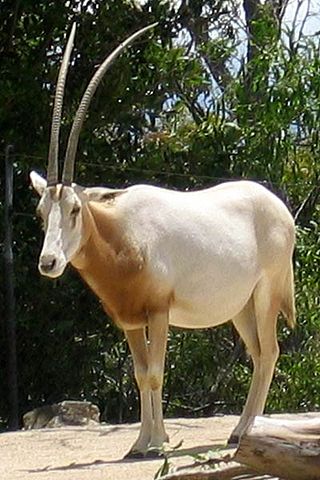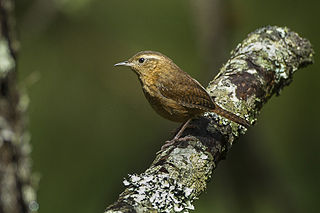Related Research Articles

Pallas's grasshopper warbler, also known as the rusty-rumped warbler, is an Old World warbler in the grass warbler genus Helopsaltes. It breeds in the eastern Palearctic: from the Altai Mountains, Mongolia and Transbaikalia to northeastern China, the Korean Peninsula, and islands in the Sea of Okhotsk. It is migratory, wintering from India eastward to Indonesia. It is a rare migrant in Sri Lanka.

Biological databases are libraries of biological sciences, collected from scientific experiments, published literature, high-throughput experiment technology, and computational analysis. They contain information from research areas including genomics, proteomics, metabolomics, microarray gene expression, and phylogenetics. Information contained in biological databases includes gene function, structure, localization, clinical effects of mutations as well as similarities of biological sequences and structures.

The Integrated Taxonomic Information System (ITIS) is an American partnership of federal agencies designed to provide consistent and reliable information on the taxonomy of biological species. ITIS was originally formed in 1996 as an interagency group within the US federal government, involving several US federal agencies, and has now become an international body, with Canadian and Mexican government agencies participating. The database draws from a large community of taxonomic experts. Primary content staff are housed at the Smithsonian National Museum of Natural History and IT services are provided by a US Geological Survey facility in Denver. The primary focus of ITIS is North American species, but many biological groups exist worldwide and ITIS collaborates with other agencies to increase its global coverage.
Biodiversity informatics is the application of informatics techniques to biodiversity information, such as taxonomy, biogeography or ecology. It is defined as the application of Information technology technologies to management, algorithmic exploration, analysis and interpretation of primary data regarding life, particularly at the species level organization. Modern computer techniques can yield new ways to view and analyze existing information, as well as predict future situations. Biodiversity informatics is a term that was only coined around 1992 but with rapidly increasing data sets has become useful in numerous studies and applications, such as the construction of taxonomic databases or geographic information systems. Biodiversity informatics contrasts with "bioinformatics", which is often used synonymously with the computerized handling of data in the specialized area of molecular biology.

The Encyclopedia of Life (EOL) is a free, online encyclopedia intended to document all of the 1.9 million living species known to science. It aggregates content to form "page"s for every known species. Content is compiled from existing trusted databases which are curated by experts and it calls on the assistance of non-experts throughout the world. It includes video, sound, images, graphics, information on characteristics, as well as text. In addition, the Encyclopedia incorporates species-related content from the Biodiversity Heritage Library, which digitizes millions of pages of printed literature from the world's major natural history libraries. The BHL digital content is indexed with the names of organisms using taxonomic indexing software developed by the Global Names project. The EOL project was initially backed by a US$50 million funding commitment, led by the MacArthur Foundation and the Sloan Foundation, who provided US$20 million and US$5 million, respectively. The additional US$25 million came from five cornerstone institutions—the Field Museum, Harvard University, the Marine Biological Laboratory, the Missouri Botanical Garden, and the Smithsonian Institution. The project was initially led by Jim Edwards and the development team by David Patterson. Today, participating institutions and individual donors continue to support EOL through financial contributions.

The Torotoroka scops owl is a subspecies of owl in the family Strigidae. It is endemic to the western parts of Madagascar, and was previously regarded as its own species. However, O. madagascariensis and the rainforest scops owl Otus rutilus have now been re-lumped following Fuchs et al. (2007) as the Madagascar scops owl or Malagasy scops owl. Therefore this taxon now becomes a subspecies, Otus rutilus madagascariensis.

The wildlife of Tunisia is composed of its flora and fauna. It has 84 species of mammals and 375 species of birds. Tunisia is well documented for its addax and dama gazelle population.

The wildlife of Western Sahara is composed of its flora and fauna. It has 40 species of mammals and 207 species of birds.

eBird is an online database of bird observations providing scientists, researchers and amateur naturalists with real-time data about bird distribution and abundance. Originally restricted to sightings from the Western Hemisphere, the project expanded to include New Zealand in 2008, and again expanded to cover the whole world in June 2010. eBird has been described as an ambitious example of enlisting amateurs to gather data on biodiversity for use in science.

The brown-throated wren is a mostly Mexican bird in the wren family, often considered a subspecies of the house wren.

Finsch's rufous thrush, also known as Finsch's flycatcher-thrush, Finsch's rusty flycatcher, Finsch's ant thrush or Finsch's rufous ant thrush, is a little-known flycatcher-like thrush of West African forests. It is often considered a subspecies of Fraser's rufous thrush.

The Tsavo sunbird is a small passerine bird of Kenya and Tanzania. It is sometimes lumped with the purple-banded sunbird.

Trechinae is a subfamily of ground beetles in the family Carabidae. There are 6 tribes, more than 430 genera, and over 6,700 described species in Trechinae.

Aphonopelma mojave is a species of spider, in the family Theraphosidae (tarantulas).

Aphonopelma parvum is a species of spiders in the family Theraphosidae, found in United States.

Curruca is a genus of Sylviid warblers, best represented in Europe, Africa, and Asia. All of these species were formerly placed in the genus Sylvia.
References
- Mitch, Leslie (2004), "Where Eagles-and Sparrows-Dare", Science , 304: 935, doi:10.1126/science.304.5673.935c, JSTOR 3836936, S2CID 220095931
- Lepage, Denis; Vaidya, Gaurav; Gulralnick, Robert (2014), "Avibase – a database system for managing and organizing taxonomic concepts", ZooKeys (420): 117–135, Bibcode:2014ZooK..420..117L, doi: 10.3897/zookeys.420.7089 , PMC 4109484 , PMID 25061375
- What's in a name? Shifting meanings of biological names, Pensoft Publishers, 2014
- Remsen, David (2016), "The Use and Limits of Scientific Names in Biological Informatics", ZooKeys (550): 207–223, Bibcode:2016ZooK..550..207R, doi: 10.3897/zookeys.550.9546 , PMC 4741222 , PMID 26877660
- Dickinson, Edward C. (2016), "Reinforcing the Foundations of Ornithological Nomenclature: Filling the Gaps in Sherborn's and Richmond's Historical Legacy of Bibliographic Exploration.", ZooKeys (550): 107–134, Bibcode:2016ZooK..550..207R, doi: 10.3897/zookeys.550.9546 , PMC 4741222 , PMID 26877660
- Sterner, Beckett; Franz, Nico M. (2017), "Taxonomy for Humans or Computers? Cognitive Pragmatics for Big Data", Biological Theory , 12 (2): 99–111, doi:10.1007/s13752-017-0259-5, S2CID 90423947
- Christidis, Les; Garnett, Stephen T. (2017), "Taxonomy anarchy hampers conservation", Nature , 546 (7656): 25–27, Bibcode:2017Natur.546...25G, doi: 10.1038/546025a , PMID 28569833
- Vaidya, Gaurav; Lepage, Denis; Gulralnick, Robert (2018), "The tempo and mode of the taxonomic correction process: How taxonomists have corrected and recorrected North American bird species over the last 127 years", PLOS One , 13 (4): e0195736, Bibcode:2018PLoSO..1395736V, doi: 10.1371/journal.pone.0195736 , PMC 5909608 , PMID 29672539